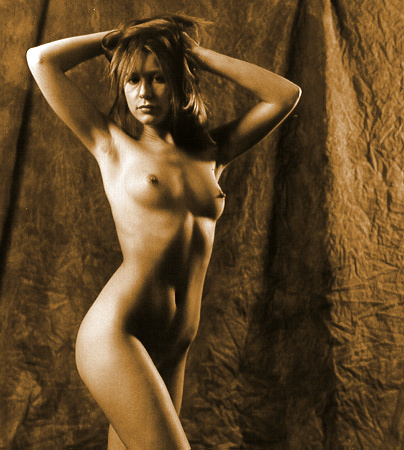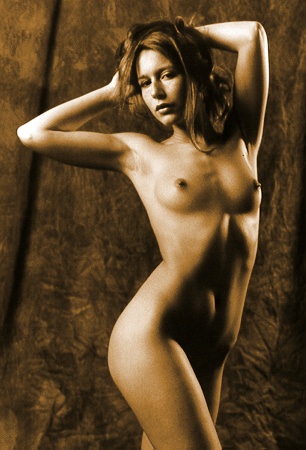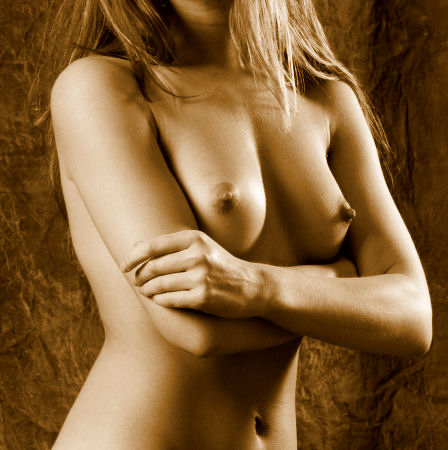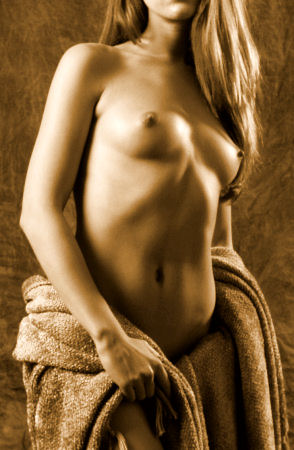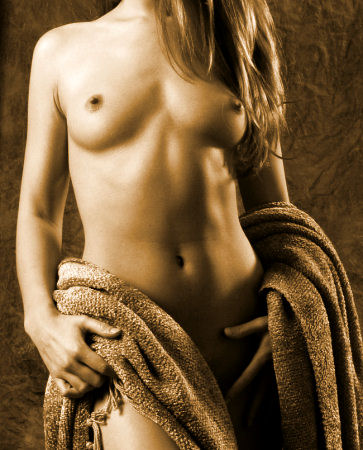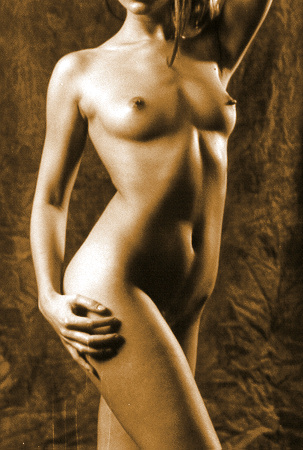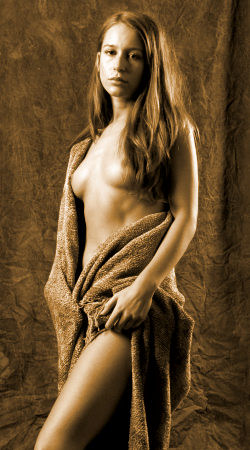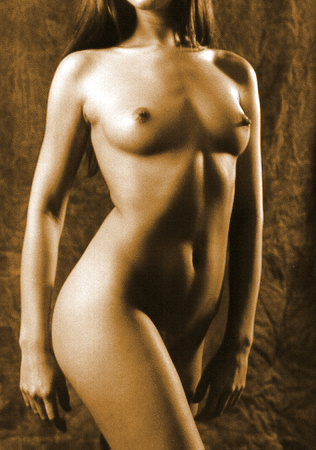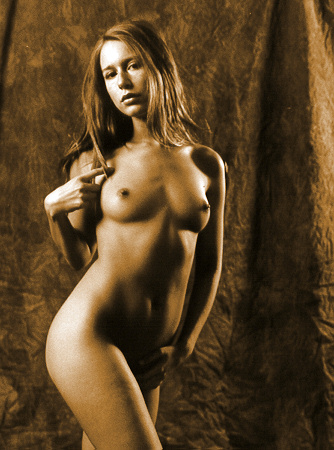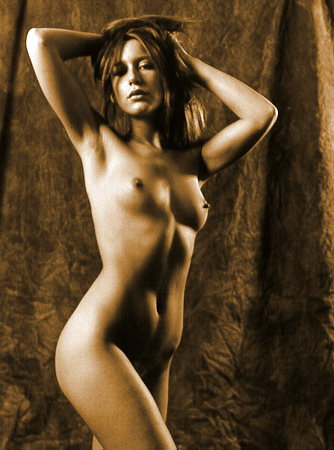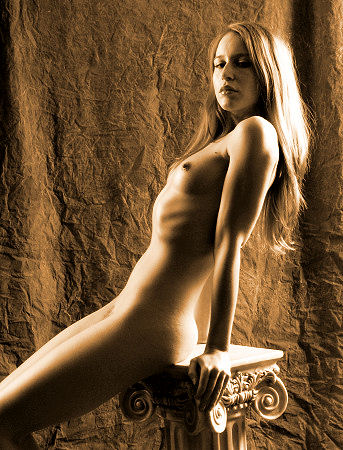|
|
While I am
distracting you with these images of Kira's world-class figure, I
think I'll repeat my favorite theory about the smile on the face of
the Mona Lisa. I do this because to a large degree, I am
responsible for the images in which Kira looks tired. |
|
|
|
<<<
Start of
another long & rambling
discourse >>>
Actually,
there are many scholarly
theories behind Mona Lisa's
smile, including...
- Some
note that the proportions
of Mona Lisa's face
exactly match Leonardo
DaVinci's self portraits,
and this leads some to
feel that the Mona Lisa is
really a self-portrait of
DaVinci himself, and the
smile is a reaction to his
little inside joke.
- Some
think that the Mona Lisa
is really a portrait of
DaVinci's mother.
There
are many other, less scholarly
theories/guesses available (click
here for some), including
that the Mona Lisa was really
smiling at her lover (who
looks like Brad Pitt) who was
standing behind DaVinci, that
Mona Lisa was sad or depressed
& putting on a brave face,
and others.
|
My
favorite theory (one that I've heard) is that Mona Lisa was smiling
because Leonardo DaVinci was entertaining. While he was painting
her,
- he was
flirting,
- he was being
witty,
- he was
charming,
- he was dancing
between brush strokes,
- he was singing,
...
... all the while
he had musicians off to the side playing music. |
|
|
|
I
like this theory because it
jives with my personal
proclivities. I believe
that a photographer (or any
artist) must take total
responsibility for the art she
or he creates.
Further,
it is my style to interact
with my models. You'll
note that in most of my
images, the model maintains eye
contact with the camera -- I
don't do (or even like)
so-called "candid"
images.
Some
photographers care little for
their models -- after all, the
model is being paid, and in
return, they are expected to
do what they are told.
That's not my style, though --
I don't like treating models
like they were simply hired
help; I like to know the
person in front of me. (For
example, my butcher's name is
Chris, he is a single father
of a 2 year old son, and he
enjoys watching Oakland Raider
games, and by the way, because
I took the time to learn a
little about him, I feel I get
better service from him.)
So,
how do I take total
responsibility for the image
while collaborating with the
model? |
| You
know, I used to have a real job, working as an engineer & program
manager at one of the top computer companies in the world (until I was
discarded like a used tissue to make room for a meaningless
merger). I was highly regarded, highly ranked, and highly
successful. But the folks there scoffed at my idea that my
photography hobby contributed to my success, but I feel that it did.
A photographer can
take total responsibility for the image while maintaining a
relationship with the real person/model by setting the
atmosphere. My leadership style was intended to inspire the
people who work for me, to recognize their accomplishments, to make it
fun for them, and to provide them positive & constructive
feedback. On
the other hand, I remember taking a photography workshop several years
ago, where the teacher/photographer told us about the time when he was
photographing a nude model, and while he was adjusting the exposure
& focus of his view camera, the model fell asleep. He took
it as a compliment, that the model was comfortable enough with him
that she could fall asleep. At that moment, I knew I was in the
wrong workshop -- there he was with a brave & beautiful model, and
he was so dull, so uninvolved with the model, that she lost
consciousness. He might as well have been photographing a bowl
of fruit! |
|
| Perhaps
I'm way off the target, rambling on about reality TV & Leonardo
DaVinci. So, let me get back to the subject at hand:
Please
note that Kira looks great in lots of these images;
She looks tired
and/or distracted in only a few of these images.
She didn't feel
good about her focus during the sitting, but truth be told, it is I
who needs to apologize to her. I think I let her down -- here
she was having a bit of a bad day, and I failed to be sensitive to
that; I failed to bring her out of
it.
But I am not upset
at all about this. Not at all:
- Lots & lots
of images, including this one, are wonderful. That
figure! Those lips!!!
- I got to meet a
wonderful model, and we are both looking forward to working
together again soon.
- I learned that I
can & should do more to set the mood & influence / inspire the models.
These are wonderful
& valuable lessons.
|
|
|
|
In
review, the two key points I'm
trying to make:
- (Reality
TV): The life of
college students is often
chaotic, and the skills
needed to deal with such
chaos are learned.
- (Reality
TV): Models bring
their lives to the
session, and photographers
have no choice but to work
with that.
- (Leonardo
DaVinci): The
photographer needs to set
the atmosphere for the
sitting and thereby
inspire the model.
As
far as this particular sitting
is concerned, the lessons
learned can be classified as
20-20 hindsight, but as it
turns out, this sitting was
the first of 3 semi-unplanned sittings with 3
different young (20-ish)
models in 12 days, and I was
able to apply these lessons
immediately to those
subsequent sittings.
(Watch this space for those
new sittings, to be processed
over the next few
weeks).
|
|
| After
these figure studies, I move to set up
a new lighting scheme, and Kira spots
my big comfy chair across the
room. "That looks so
comfortable," she said. I
ask her if she wanted to pose in it,
and she said yes. Take a look:
This
sitting continues on the Kira,
Reclining.
|
